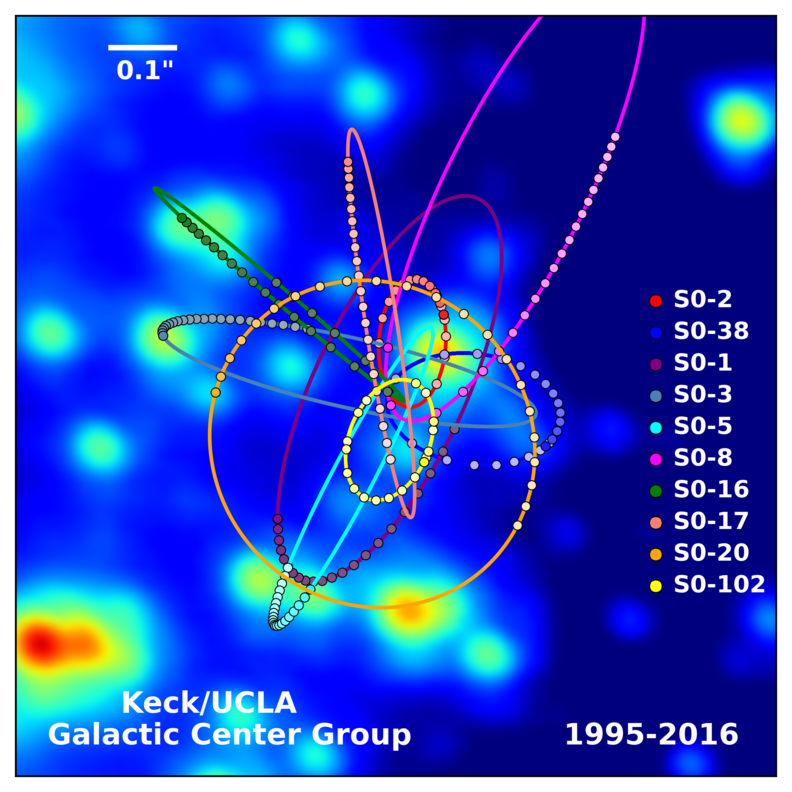
Assume that this region of the Galaxy is 8 kpc from the Sun.
- The FWHM of the IR images used to construct this information is about 0.08 arcseconds. What is the linear size at the center of the Galaxy corresponding to this angular size?
- Note the orbit shown in dark blue, marked "SO-38". Use the scalebar in the figure to estimate the size of this orbit. What is the semi-major axis of the orbit of this star, expressed in AU?
- The star "SO-38" has an orbital period of about 18 years. What is the mass of the object it orbits? (In other words, what is the mass of the black hole at the center of the Milky Way?)
- What is the maximum wavelength one can detect with silicon devices?
- What is the rest wavelength of Lyman-alpha photons?
- What is the maximum redshift at which Joe can detect Lyman-alpha emission?
After years of waiting, the prices of HgCdTe ("mercadtel") detectors have finally dropped into his price range. "Aha!" he cries with glee, "I can finally study high-redshift Lyman-alpha galaxies!"
- What is the maximum wavelength one can detect with HgCdTe devices?
- What is the maximum redshift at which Joe will be able to detect Lyman-alpha emission?
- How many galaxies have we found so far at this redshift?
- Remember, Joe is a low-budget scientist. Can you predict how well his plan is going to work?
- What is the diameter of its telescope?
- What is the range of wavelengths over which it observes?
- What is the diffraction limit (in arcseconds) of the telescope at
- its shortest wavelength?
- its longest wavelength?
- Consider a spiral galaxy like the Milky Way, which has
a diameter of very roughly 40 kpc. How large would
such a galaxy be, in arcseconds, if observed at high
redshift? Use
Ned Wright's Cosmology Calculator
to find out. For each case below, type the redshift
into the calculator and press the "General" button.
Use the resulting value of the "Angular Size Distance"
to calculate the angular size of a Milky-Way-like
galaxy at
- redshift z = 1?
- redshift z = 3?
- What would be the appearance of a big galaxy like this in the SPHEREx dataset, at these redshifts?
- Do you notice anything strange about these angular sizes?
 Copyright © Michael Richmond.
This work is licensed under a Creative Commons License.
Copyright © Michael Richmond.
This work is licensed under a Creative Commons License.